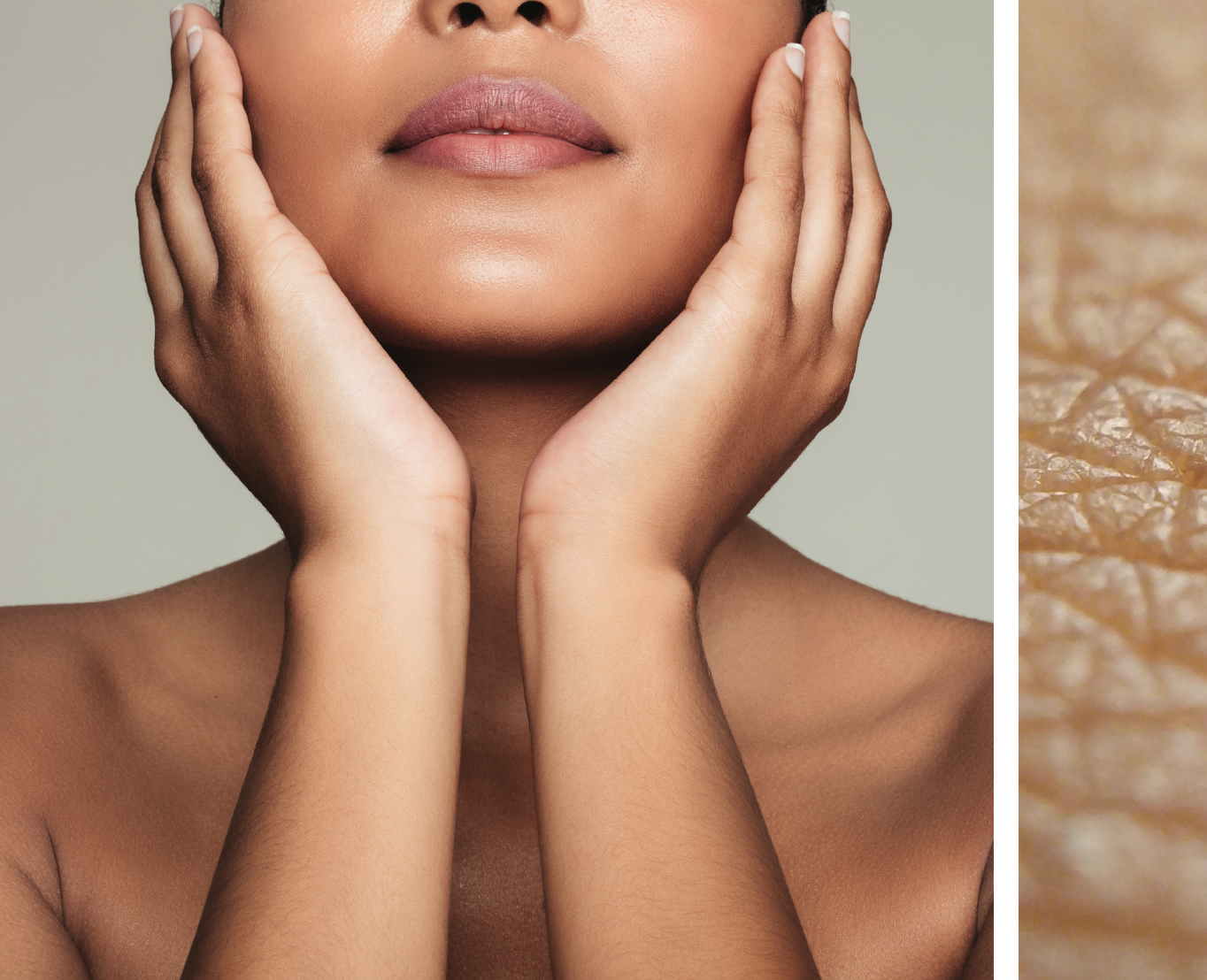In this article, we'll delve into the fascinating world of skin, exploring what it is, how it's built, its benefits, and the various types of skin.
What is Skin?
Skin, also known as the integumentary system, is a complex organ composed of multiple layers of tissue. It covers the entire external surface of the body, acting as a protective barrier against environmental factors such as UV radiation, pathogens, and toxins. Additionally, skin plays a crucial role in regulating body temperature, synthesising vitamin D, and providing sensory information through nerve endings.
How is Skin Built?
The Skin is built with 3 layers; the epidermis, the dermis and the hypodermis.
Each of them is built differently and performs a different function.

The Epidermis
The epidermis the outer most part of the skin and is made up of 5 layers: The stratum corneum -The stratum lucidum -The stratum granulosum-The stratum spinosum -The stratum basale
The epidermis provides a vital barrier from the outside environment. Often confused as the ‘dead layer’.
1st top layer is the stratum corneum. Made of numerous dead, keratinized cells forming flat scales. Its main goal is effective protection against mechanical and chemical injuries an All cells in this layer are filled with protein (i.e. keratin),
This skin layer is constantly shedding, and constantly trying to renew itself. That is why we need to exfoliate the skin regularly.
2nd the stratum lucidum- this second layer is only found under the soles of the feet and palms of the hands, looking like transparent hard skin.
3rd layer called the stratum granulosum. Its acts as a barrier between 1st and 2nd layer and prevents unwanted chemicals and debris from getting any further into your body. In this layer the ceramides are produced which are responsible for retaining water in the skin!
4th layer is the stratum spinosum-The stratum spinosum is the thickest layer of the epidermis. It is made up of many rows of cells that no longer fit so tightly together. The spinous and basal layers form the so-called living epidermis us the cell are still active.
5th known as the stratum basale layer (- a row of living, closely adjacent stem cells that are responsible for the process of epidermal renewal. These cells of the basal layer are constantly multiplying and are responsible for the fact that each of us "replaces the epidermis" every 28 days.
The Dermis
The Dermis is made of Areolar connective tissue (binding tissue which acts as a support for the skin) Often referred to as the ‘living layer’ due to the supply of glandular, lymphatic, vascular and nerve tissue.
The dermis also contains: hair, sebaceous (sebum, oil producing) glands, sudoriferous (sweat glands), sensory nerve endings and collagen & elastin fibres.
Do you know that Each of these elements has a key role in the proper functioning of healthy skin.
Blood vessels supply every cell and structure in the dermis with oxygen and nutrients, helping to feed everything that creates a healthy skin cell. When these capillaries break, we can see the redness and sensitivity on our face -usually cheeks and nose area. This is just one reason why we need Vitamin C as it strengthens the capillary walls within the dermis.
Our sweat glands help us to regulate body temperature and help to provide the skin with natural moisturising factors.
Our hairs help to direct oil towards the surface of the skin so that it is hydrated and moisturised, while our sebaceous glands secrete sebum into hair follicles.
Sebum prevents the skin from becoming infected. It also waterproofs the skin and stops it from drying out, so it’s very important to keep that in balance.
The hypodermis
This layer is also known as subcutaneous tissue. This layer contains cells that create connective tissues and produce the protein necessary to connect the epidermis to the dermis. The hypodermis insulates us it's our protective shell, like a fiberglass coat - and its fat cells are storage units for energy and nutrients.
Types of Skin
Skin types can vary widely based on factors such as genetics, environment, age, and lifestyle. The four primary skin types are:
- Normal Skin: Balanced skin with minimal oiliness, dryness, or sensitivity. Normal skin typically has a smooth texture and few blemishes.
- Dry Skin: Lacks moisture and may feel tight or flaky. Dry skin is prone to sensitivity and may appear dull or rough.
- Oily Skin: Overproduction of sebum (oil) leads to a shiny complexion, enlarged pores, and a tendency toward acne and blackheads.
- Combination Skin: Combination skin exhibits characteristics of both dry and oily skin, with oiliness in the T-zone (forehead, nose, and chin) and dryness in other areas.
The skin is a multifaceted organ that deserves our attention and care!
Exploring the intricate word of SKIN health is an ongoing journey so in the next articles we will expand our knowledge about the skin types and most common skin problems.
Stay tuned for our upcoming articles as we embark on this subject together.


